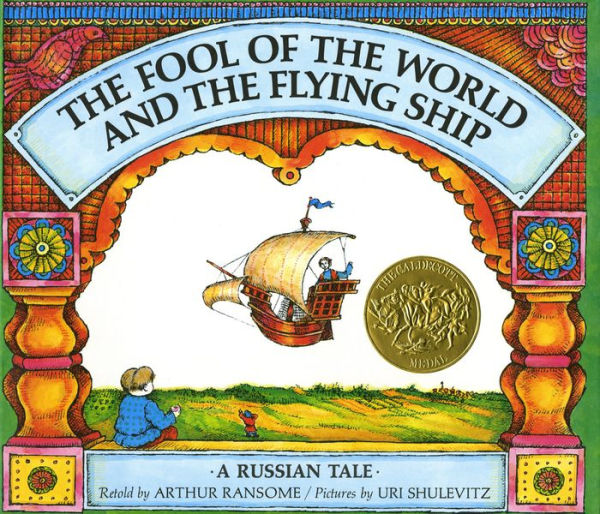Reading Group Guide
Author/illustrator Uri Shulevitz spent the early years of his life, from the age of four, wandering with his family, in search of a home. From war-torn Warsaw, Poland to the Central Asian city of
Turkestan in the Soviet Union to Paris, France to Tel Aviv, Israel, and finally to his permanent home in New York City.
Likewise, many of the characters in his books travel too. The Fool of the World sets off in search of a flying ship. The young boy in How I Learned Geography uses a map and his imagination to travel the world. Benjamin of Tudela journeys for fourteen years to the far reaches of the known world and back again to Spain. In The Treasure, Isaac travels great distances to the Royal Palace in search of a treasure that he finally finds under his own stove. And the young hero of When I Wore My
Sailor Suit sets off on an imaginary journey to distant lands as the captain of a sailing ship on both calm and storm tossed seas.
Opportunities abound for social studies curriculum connections as well as language arts (reading,
writing, and research) and visual art connections. Invite your students to join you on a journey of fun, learning, and imagination!
LANGUAGE ARTS: Reading Literacy
To Tell a Tale: To Learn a Lesson
Both The Fool of the World and the Flying Ship and The Treasure are retellings of well-known tales. Introduce or revisit the concept of folklore, particularly folktales and fairy tales. Then,
introduce students to The Fool of the World and the Flying Ship as a Russian fairy tale retold by
Arthur Ransome in Old Peter's Russian Tales and illustrated by Uri Shulevitz and The Treasure as a traditional English folktale, retold and illustrated by Shulevitz.
Read both books aloud to students and engage them in a discussion of the similarities and differences in the plots of the two stories. Record their responses on a Venn diagram. Ensure that students notice the shared theme of travel to the royal palace by a poor fellow in search of a "prize."
Remind students that folktales and fairy tales often aim to teach a moral or "lesson." Conclude your discussion by asking students to formulate the moral of each story.
Extension: Read aloud other folk and fairy tales and challenge students to distill and state the moral of each story. [Note: Fables are a kind of folktale that have readily apparent morals. Consider starting this activity by sharing and discussing Aesop's Fables, selected and illustrated by Michael
Hague.]
LANGUAGE ARTS: Writing Literacy
On the Other Hand
The story of The Fool of the World and the Flying Ship is told from the Fool's point of view. There are, of course, other points of view that the story might have been told from. One of the most interesting of these is the Princess's point of view. Begin by inviting students to consider how the
Princess might have felt about her father's decision to give her away in exchange for a "flying ship"
with no thoughts to her own feelings or preferences in the matter. Would she have appreciated her father's actions? Would she have worried about who she might have to marry? Would she have looked forward to meeting the winner? Would she have rebelled? If so, how? The answer to each of these questions will depend on the character traits of the Princess that your students imagine. For example, is she strong-spirited, shy, willful, respectful, quiet, loud?
Depending on the age and maturity level of your students, invite them to write the story of The Fool of the World and the Flying Ship entirely from the Princess's point of view either as a full-class activity, in pairs, or individually. Read and share each story with the full class. Allow students to illustrate their tales if time allows.
VISUAL ARTS
One Artist, Two Styles
Uri Shulevitz won a Caldecott Medal for The Fool of the World and the Flying Ship in 1968 and a
Caldecott Honor citation for The Treasure in 1978. Begin by introducing or reviewing the purpose and criteria for the Randolph Caldecott Medal given annually by the Association for Library
Service to Children, a division of the American Library Association, to the "artist of the most distinguished American picture book for children."
Next, read both books aloud to children. Then, invite them to comment on the illustrations in the books and the things that they enjoy about each. Discuss the similarities and differences they notice in the illustrations, focusing not only on the style of the illustrations but such design elements as single versus double-page spreads, framed versus full bleed illustrations, and visual perspectives.
Invite students to choose the style most appealing to them and create a piece of artwork, possibly using watercolor, that imitates the Shulevitz style they have chosen. Display related student work beneath a photocopy of the illustration from the first page of each book.







